Do you know what could make hiking uncomfortable for you? Pains! Many people experience pain while hiking; for instance in their bodies, feet, ankles, knees, back, and toes.
Undoubtedly, hiking can be fun, but once your toes start hurting, you may go from 100% excitement to zero real quick. The truth is, there are so many things that could make your toes hurt when hiking.
If your toes have been hurting right from time and you have no idea why you should read this article to know the possible reasons. Also, hurting toes could lead to many things you probably don’t know, so you should stop that from happening.
You can take some measures to prevent your toes from hurting. In this article, we’ll discuss some of the factors that contribute to toe pains when hiking. Also, we’ll discuss how you can stop your toes from hurting while on the trail.
So, if you’re about to go on your first hiking trip, you’ll find this article helpful too. Then, you could avoid toe pains altogether! Let’s get into the details of how to stop hiking boots from hurting toes.
Let’s get started.
Contents
- Why Do My Hiking Boots Hurt My Toes?
- 1. Improper hiking boots lacing
- 2. Sliding feet
- 3. Unfit hiking boots
- 4. Inadequate breaks during hikes
- 5. Thin insoles and do not have good support
- 6. New hiking boots
- 7. Too much load on hiking boots
- 8. Hiking down a slope
- 9. The wrong socks
- 10. Hiking boots with poor breathability
- 11. Hiking boots are not broken in
- How To Stop Hiking Boots From Hurting Toes?
- #1: Re-lace your boots at intervals to prevent swollen toes
- #2: Wear appropriate socks to prevent toe blisters
- #3: Change your hiking boots to prevent painful toes
- #4: Trim your toenails to prevent toe fungus
- #5: Wear fit hiking boots and toe separators to prevent toe bunions and calluses
- #6: Stretch hiking boot toe box to prevent toe pains
- #7: Break in your hiking boots
- Some other tips for your feet
- Conclusion
Why Do My Hiking Boots Hurt My Toes?
You have probably been wondering for a while why your toes hurt in your hiking boots. And honestly, your toes could hurt for many reasons.
After a long hike, you’ll feel it in your body that you did an intense physical activity. If you’ve been hiking for a while and you still feel toe pains, it’s because you haven’t paid attention to things that cause them.
If you’re hiking for the first time, you should probably prepare yourself for any possible toe pain when you go hiking. So, the following are some of the common causes of toe pains during a hike:
1. Improper hiking boots lacing
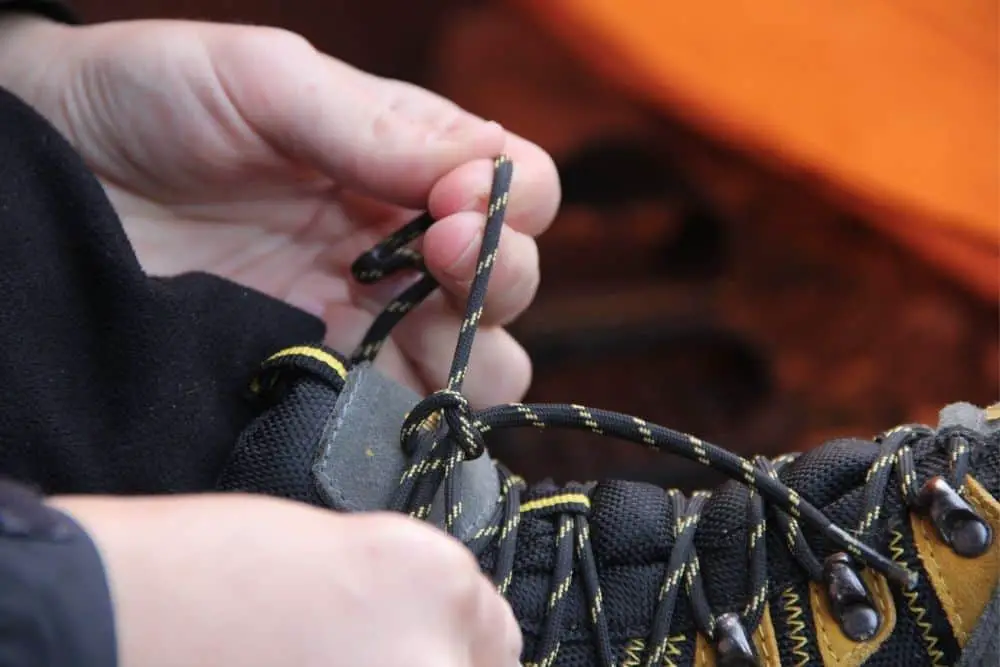
One way your hiking boots hurt your toes is when you don’t lace your boots properly. It doesn’t matter if you’re wearing the right fit of hiking boots; if you lace your boots wrongly, you’ll put pressure on your toes, causing them to hurt.
And in some cases, you don’t stop to re-lace your boots till you’re done hiking. Unfortunately, that means that you put pressure on your toes and endured the pain till the end of the hike.
2. Sliding feet
Another thing that could make your toes hurt in hiking boots is when your feet aren’t locked in position in the boots. For example, when your feet slide forward in hiking boots, your toes would hit the boots’ toe box.
This happens when your feet have too much space to move freely, and it could also occur when you wear oversized hiking boots. If your hiking boots have been big right from time, you’ll probably experience this.
Plus, if you’re yet to get your hiking boots or go on your first hike, you’re better without oversized boots if you don’t want to deal with hurting toes.
Another reason why your feet slide forward is when you’re walking down a hill. So, your toes will probably hurt if you hike downhill, irrespective of whether you wear snugly fit or oversized hiking boots.
3. Unfit hiking boots
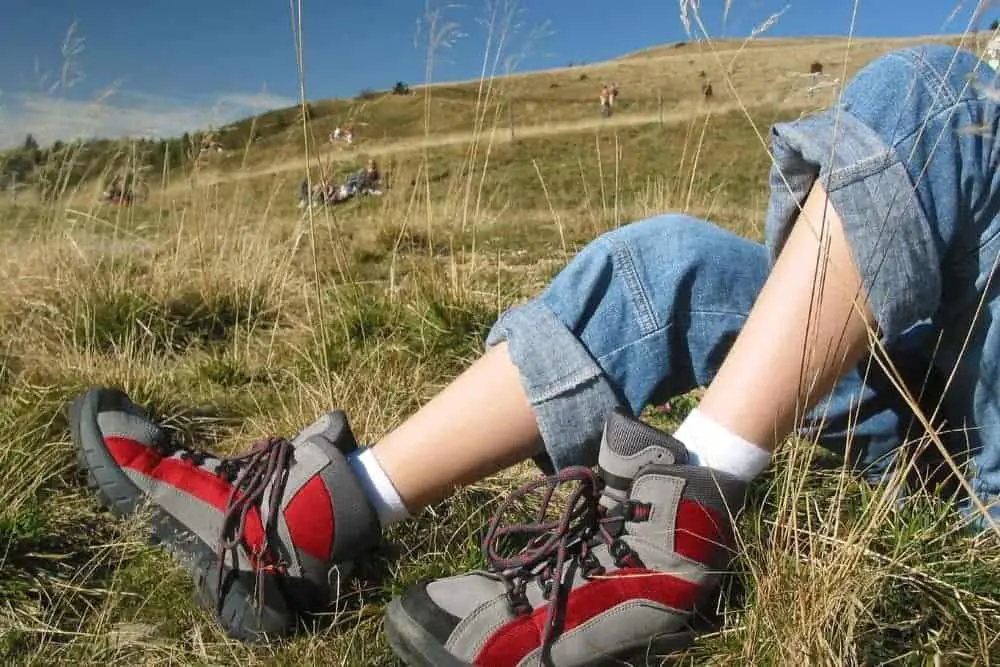
One primary reason why hiking boots hurt hikers’ toes real bad is that they wear unfit boots. But, likewise, your toes may hurt for the same reason.
Your toes probably hurt because your hiking boots are extremely tight or loose. For example, when your hiking boots are tight, they make your toes rub against the interior of your boots.
The widest part of the human’s foot is the ball of foot area, and when the hiking boots are narrow, they force the region to squeeze. And when that happens, your toes are more likely to suffer.
In some cases, your hiking boots material can make things worse. For example, leather and suede are tough and take time to expand and fit your foot perfectly.
So, when you wear them, they make your toes hurt, and you may end up with bruised or sore toenails. Another thing is that your feet tend to swell after hiking for a while.
So, if your boots are a tad bit tight, you can imagine what would happen to your toes and feet in general. Also, if your hiking boots are too big, your toes will probably suffer from them when they keep slipping around in your hiking boots. Worse, they could make you trip and fall on hiking trails.
4. Inadequate breaks during hikes
Your hiking boots can hurt your toes if you keep going on for miles without taking breaks. Hiking can be fun or intense, depending on how you see it and what you do on a hike.
If you are always in a hurry to get to your destination and you do that at a go without stopping, you’ll make your toes hurt. Not only that, you probably won’t enjoy hiking as you should.
You wouldn’t have enough time to immerse yourself in the activity or enjoy the scenery around you. You need to take breaks to let your feet breathe from your boots.
Also, you would need to re-lace your hiking boots to fit your toes properly or deal with hurting toes till you return home. We’d advise that you take breaks, let your toes rest, and enjoy the whole hiking experience.
5. Thin insoles and do not have good support
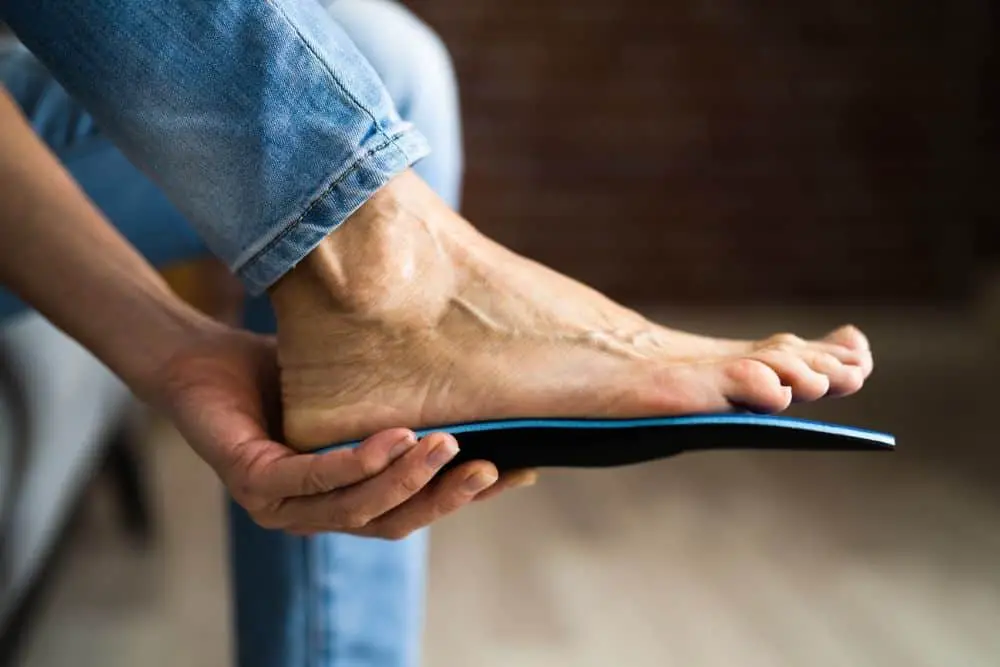
Your hiking boots could also make your feet hurt if the insoles are thin. However, after wearing hiking boots for a while, they tend to wear and relax, including the insoles.
When the insoles get thinner or uneven, they make your feet feel imbalanced in the boots. And as a result of that, your toes tend to rub against the boot’s inner.
If you’ve been wearing your hiking boots for a while and you suddenly start experiencing toe pains, it’s probably because your boot’s insole is smaller. So, it’s time for a change.
6. New hiking boots
New hiking boots are also a significant cause of toe pains. When you first buy hiking boots, they are usually stiff and tight. So, when you wear them, they are snug around your feet, and sometimes they feel tight.
When they feel that way, that leaves less room for your feet, eventually causing them to rub against your boots. The hiking boots would probably fit better with time when you wear them, and they expand.
However, you would have to deal with the pain during those periods, or you could try some methods that would make them stop hurting.
7. Too much load on hiking boots
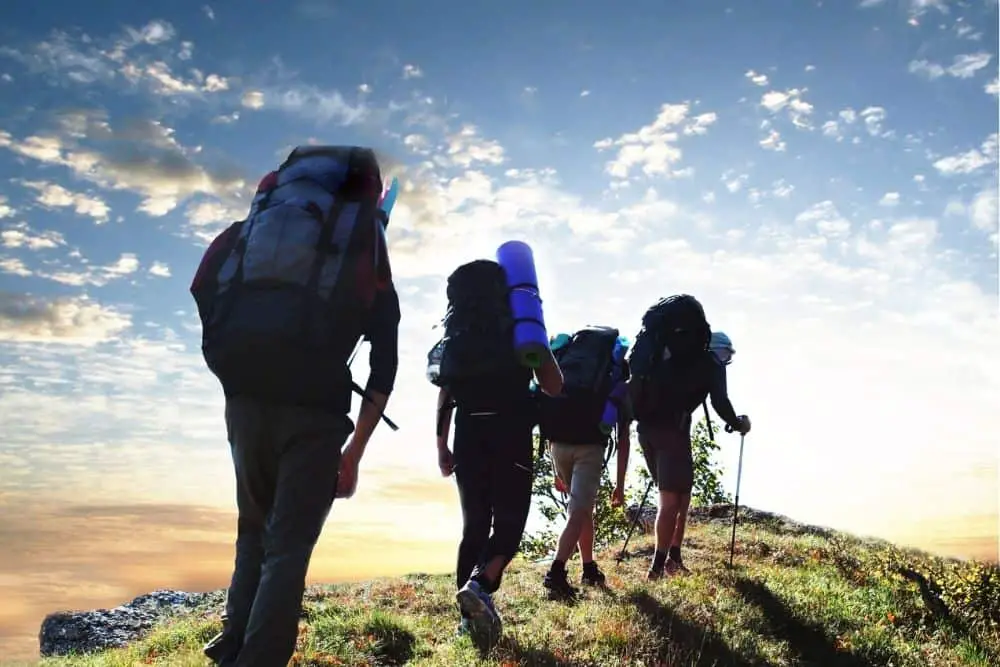
Hiking boots can make your toes hurt when you put a lot of pressure on them. For example, you put a lot of weight on your hiking boots when you carry heavy backpacks.
Packing unnecessary items in your backpack could be the reason for this. Too much weight will not only make your backs hurt, but it’ll also put pressure on your knees and ankles.
So, in a bid to get comfortable, your feet would move around in the boots making your toes hurt. So, before you overload your backpack for your next hiking trip, you should consider your toe, especially if you’ve been experiencing pains for a while.
You shouldn’t make that mistake, too, if you’re going hiking for the first time.
8. Hiking down a slope
Sometimes, your hiking boots can hurt your toes when you hike down a slope. When hiking down a slope, your feet tend to push forward in your hiking boots.
And as a result, your toes hit the front of your boots, squeezing them together against the boots. Also, they could rub against each other, resulting in blisters or bruised toenails.
9. The wrong socks

Wearing the wrong socks in your hiking boots would also make your toes hurt. For example, when you wear too thin socks, your feet rub against your hiking boots’ insoles, making them hurt. Also, it allows your feet to move around too freely in your boots and make them hit different angles in your boots.
At the same time, if you wear too thick socks or layers of thick socks in hiking boots, you could squash your toes in your boots. That makes the boots overly suitable, and your feet have to manage the little space left in your boots.
10. Hiking boots with poor breathability
Another way your hiking boots can make your toes hurt badly is when they are not very breathable. They make your feet sweat as they don’t allow unrestricted airflow within and outside your hiking boots.
The moisture soaks your socks when your feet sweat, causing friction between your feet and hiking boots. As a result, your toes may hurt in the process.
11. Hiking boots are not broken in
One of the most common conditions causing the toes of your feet to hurt is hiking boots are too new and not completely broken in, especially with leather hiking boots.
New hiking boots are often stiff and not very flexible, so they can completely hurt your feet. Give them time, 1 to 2 weeks with normal usage will make them break in. Or
you can also use the break in methods which we will cover just below.
How To Stop Hiking Boots From Hurting Toes?
What should you do when your toes hurt badly in your hiking boots? Should you ignore it and carry on with your hike or do something about it?
Ignoring hurting toes isn’t the solution to them. In fact, they could make hiking horrible for you, or worse, make your toes hurt for an extended period.
In the long run, hurting toes can result in discomfort during and after hiking, which is why you need to prevent that from happening. Nevertheless, we have some solutions that can help you.
We’ll discuss the reason why you need to heal your hurting toes and the solution to try.
#1: Re-lace your boots at intervals to prevent swollen toes

Of course, your hiking boots can hurt your toes and make them swell if you don’t remedy the situation on time. Swollen toes can badly hurt when hiking, and you would have to deal with them after hiking.
Furthermore, the swelling could get worse when you do nothing about it, which is why you need a solution. What can you do?
You can ease some pain in your toes and reduce the swelling by stopping to re-lace your boots occasionally. However, you should not continue hiking, hoping that the pain or swelling will disappear while you make yourself uncomfortable.
You can stop the swelling from happening or reduce its effects by re-lacing your boots. So, you can pause after 20 minutes of hiking and re-lace your boots. However, you would need to learn how to lace hiking boots properly, so your feet are comfortable in your hiking boots.
After hiking for a while, pay attention to your feet and note the part of your toes that hurt. From there, you can decide which lacing technique would be comfortable for the next long minutes of hiking before you stop again.
Pros
- It relieves and prevents toe pains
- It prevents your toes from being constrained
Con
- It’ll slow you down
#2: Wear appropriate socks to prevent toe blisters
- Lifetime-Guarantee --- No-Slipping No-Bunching. Available in sizes: US Women 5-7 / US Men 3.5-6, US...
- Performance-Athletic-Socks --- Not only for hiking but also all the outdoor-activities,such as...
- No-Painful Feet - Cushion in the under-foot-area for comfort,which will re-lieve the p-ress-ure on...
Last update on 2023-11-11 / Affiliate links / Images from Amazon Product Advertising API
Another reason you need to remedy toe pain in hiking boots is that it can result in blisters. Heat, friction, and moisture are some of the causes of blisters.
So, when that happens, you may get blisters in the process. When you have blisters, you may have to deal with the discomfort till you get back home and can treat it properly.
However, you can prevent that from happening. For example, when you recognize early that your toes hurt through hotspots on your toes, you can prevent that as well before you set out for your next hiking trip.
One way you can prevent toe blisters when hiking is to wear appropriate socks. For example, you should wear thick hiking socks because they can help prevent friction.
Wearing thick hiking socks would help prevent blisters that may form on top of your toes. You should especially wear them when going on longer hikes where you’re more prone to blisters.
Furthermore, you can also prevent between the toes blisters by switching your socks in between hiking. During hiking, your feet may sweat and may soak your socks in the process.
This can lead to irritable feet and worse blisters between your toes. So, you can prevent that by changing to dryer socks as you hike. You should also ensure that the socks are breathable.
Pros
- Some hiking socks with reinforced toes can protect the toe from shocks and impact
- It prevents moisture, and reduces heat and friction.
- Supports other parts of your foot (arch, heel)
#3: Change your hiking boots to prevent painful toes
Another reason why you need to look for a solution is if your toes are painful. This is quite different from swelling, blisters, or soreness.
You would need to be able to differentiate between them. For example, if you notice that your toes hurt after hiking, you need to look at it.
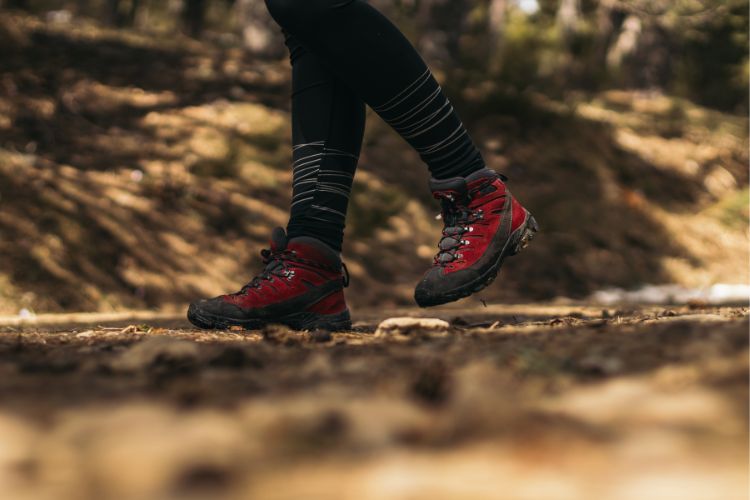
Try curling your toes in your hiking boots or after hiking. Figure out if they hurt so much or if it’s normal. If it’s a persistent pain that occurs every time you hike, then you need to do something about it.
One way you can get rid of or prevent persistent toe pains is to change your hiking boots. Your continuous toe pains could result from unfit hiking boots, especially when they are super tight.
The best thing you would have to do is to start properly wearing fit boots. So, when next you go shopping for hiking boots, ensure they appropriately fit before you leave the store.
- Pigskin leather and mesh upper
- Metal hook traditional lace closure
- Bellows tongue keeps out debris
Last update on 2023-11-11 / Affiliate links / Images from Amazon Product Advertising API
If the pains persist after switching up, it could be due to a bone problem or inflammation. Then, you would need to visit a podiatrist for help before returning to the hiking trail.
#4: Trim your toenails to prevent toe fungus
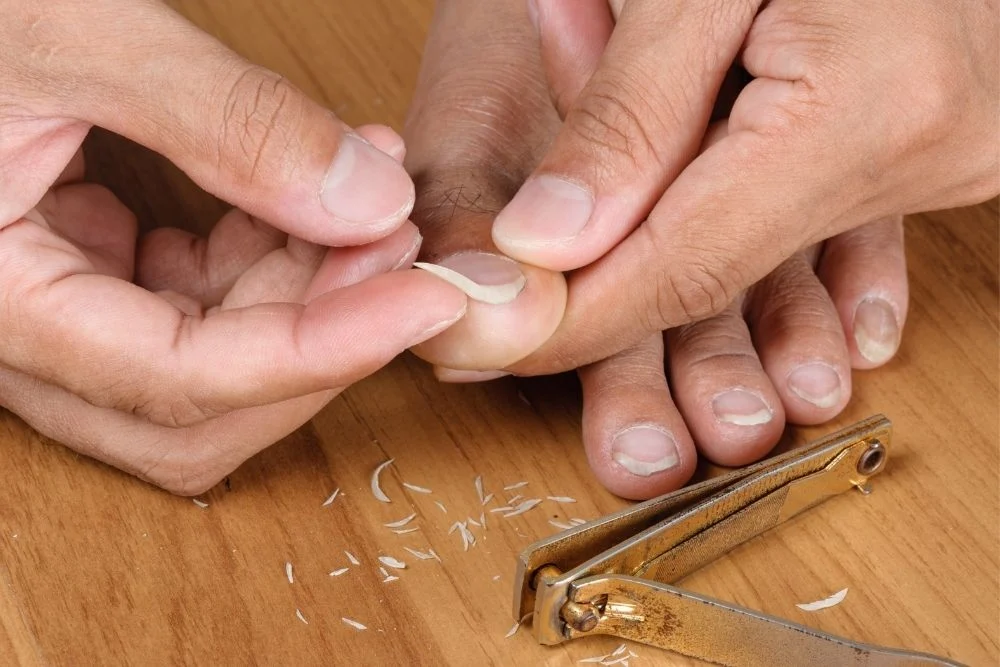
You could also get a fungal infection when hiking, which you need to treat before it becomes a problem. Fungal infection can cause toe itching or burns which could make you uncomfortable during and after hiking.
You can tell you have a fungal infection on your toes when you notice that the skin on your toes is cracked and peeling. It could be on one toe or more, and you need to do something before it spreads to other toes.
Another way you can tell you have a fungal infection is when you have cracked yellow toenails. This fungal infection is known as onychomycosis. You could also get blackened toenails from bruising your nail bed in the hiking boots.
So, what solution can you try?
You could prevent toe infections by trimming your toenails before setting out to hike. Generally, wearing long toenails for something as serious as hiking can be dangerous.
You risk bleeding your toes, because they will squeeze against your hiking boots front or toe box. So, the better thing to do is trim your nails.
However, if you’re a little too late for that and you already have to toe fungal infections, then you would have to remedy that. Sometimes, the toenail may fall off, and you would have to wait till it grows back.
Also, you should change your hiking boots because you don’t want the infection affecting your other toes. If you buy used hiking boots, ensure you wash them properly and wear clean socks with them so you don’t expose yourself to possible fungal infections.
#5: Wear fit hiking boots and toe separators to prevent toe bunions and calluses
- Relieve Pain Instantly - Big toe caps protect blisters, calluses, sore corn, ingrown toenail, toe...
- Simple & Comfortable: Big toe protectors are made with highly elastic gel which is very comfortable...
- Soft Gel Material: Toe covers made of soft and durable medical-grade silicone which is latex free!...
Last update on 2023-11-11 / Affiliate links / Images from Amazon Product Advertising API
You also need to prevent your toes from hurting due to bunions and calluses. A bunion is a condition whereby there is a tissue or bone lump on the side of your big toes.
This situation happens when your hiking boots are too narrow, affecting the side of your bigger toes. Not only that, it would affect your walking gait when hiking and make hiking uncomfortable for you.
On the other hand, callus is a condition where a part of your toe becomes dry and thick. This often occurs when you’re hiking down a hill, and you expose your toe skin to too much friction. Calluses can be painful, so you have to prevent that from happening.
You can prevent bunions by wearing hiking boots that fit your feet appropriately. Ensure that the next time you go hiking, the boots you wear have enough room for your toes to relax and move freely.
It’ll prevent your toes from rubbing against each other in your boots. In addition, you can prevent bunions and calluses from happening by wearing toe separators. Plus, you can wear them on your socks in your hiking boots. You can get a good toe separator on any e-commerce website.
This method keeps your feet healthy thought it may bring discomfort.
#6: Stretch hiking boot toe box to prevent toe pains
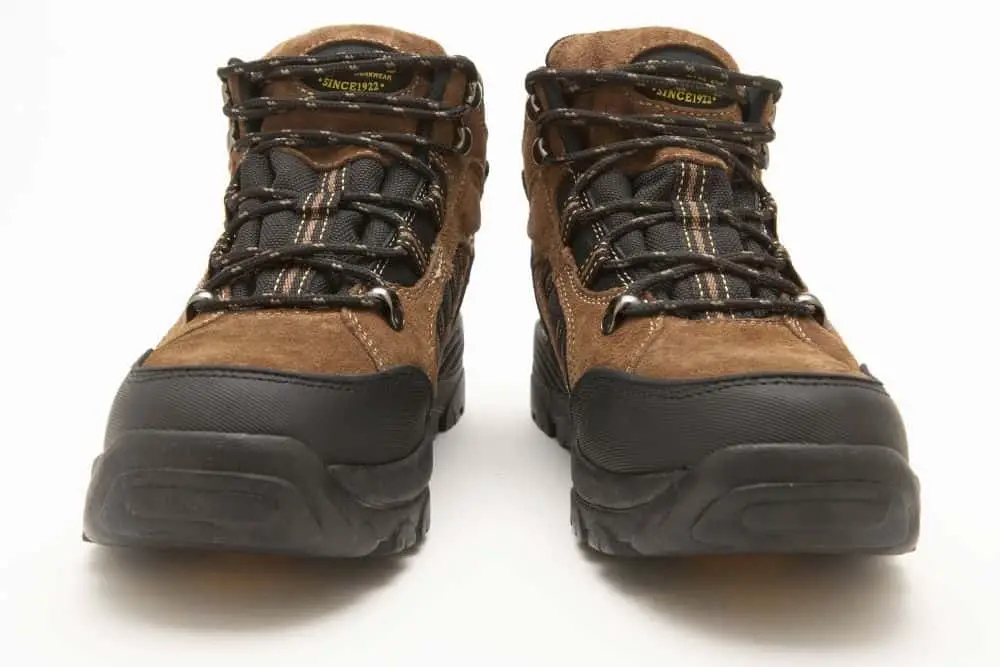
Tight toe box can make your toes hurt when hiking. It squashes your toes together in hiking boots and makes them rub against each other and the toe box interior.
However, you can prevent that from happening by stretching the hiking boots toe box. You can stretch the toe cap of your hiking boots by using a boot stretcher or shoe tree. Before you go hiking, you can insert the boot tree and stretcher in your hiking boots overnight.
That should stretch it a bit, and if it still feels stiff, you can repeat the process till it’s free. Also, you can steam your hiking boots or use boot stretch spray on the boots.
That should make the material relax and soften. You can also save yourself the stress by taking it to a cobbler who will do it for a token.
#7: Break in your hiking boots
Breaking in your hiking boots will make them softer. There are quite a few methods to break in them. Here are some popular and effective methods to speed up the break-in process such as:
- Use leather conditioner (only for leather boots)
- Use the steam from a kettle to steam inside the boots, put on socks and wear them until it gets cool (wait for the boots to cool down then put them on, avoiding burning your feet)
- Spray water on the entire hiking boots, then put them on and walk until they are completely dry
- Use the boot stretcher to expand the inside of the hiking boot
- Use boot stretcher spray to make leather hiking boots stretch quickly.
Repeat the methods if necessary. Besides, you can also see many other methods to break in boots here!
Last update on 2023-11-10 / Affiliate links / Images from Amazon Product Advertising API
Some other tips for your feet
When hiking, you’re likely to feel numbness, soreness, or pain in your toes, which may be ‘normal’ since it’s more intense than walking.
Your toes could go numb all through when hiking, and even worse if it goes on for days. At the same time, your toes could get sore or red from hiking for a long period in your hiking boots.
So, there are different ways you can prevent and treat toe pain when hiking apart from the solutions we listed previously.
1. Put soft material in your hiking boots
You can prevent your toes from hurting in tour hiking boots by putting soft materials like cotton or clothes in your hiking boots. So, put a sizable amount in your hiking boots before you wear them.
It serves as a soft cushion for your toes, thought it can take up space in your hiking boots
2. Foot powder

Wearing foot powder with dry socks can help reduce friction in your hiking boots. You could get standard foot powder or go for a cheaper option, like talcum powder.
Foot powder can help minimize friction and prevent toe blisters.
3. Descend correctly/walk zigzag

To prevent hurting toes from hiking down a slope or hill, you need to descend correctly. So, to do that, you need to descend in a zigzag-like manner. As a result, your feet don’t slip too much to the front of your hiking boots, making them hurt.
Pros
- It’s an excellent method to descend downhill.
- Prevents you from slipping down the heel.
- Stops your toes from hitting your boots and minimizes the effects.
Con
- It may require too much focus and concentration which may distract you from the surroundings and enjoying the scenery.
4. Use a trekking/hiking pole
- BUILT TO LAST: Whether you're hiking on rugged terrain or the beaten path, you need hiking gear that...
- LIGHTWEIGHT: These hiking poles are crafted with strong aircraft-grade 7075 aluminum, tougher than...
- ADJUSTABLE: Set to your desired height in seconds, from the 54" max height down to just 24.5" when...
Last update on 2023-11-11 / Affiliate links / Images from Amazon Product Advertising API
This solution also works when you’re ascending or descending a sloped hiking trail. It serves as a balancing tool and steadies you when hiking, controlling your movements as you hike.
Hiking poles work well for balance and support your weight when hiking.
5. Keep dry feet
Another way to prevent toe pains is to ensure that you keep dry feet from the beginning to the end of your hiking trip. You can do that by wearing breathable hiking boots and socks. Another way to do that is to ensure that you swap your wet socks to dry ones.
Pros
- It prevents friction.
- You feel comfortable when hiking.
- It prevents smelly feet.
Cons
- Breathable socks and hiking boots may expose your feet to cold, especially when the weather is freezing.
- Carrying extra socks equals extra stuff in your backpack.
6. Wear inserts with arch support

You could also prevent toe pain, numbness, and soreness by wearing inserts that provide better arch support. When you have adequate arch support, your feet will be comfortable and stable in your hiking boots.
Pros
- Adds balance to your feet in your hiking boots.
- It can make up for worn insoles.
Con
- It may make your hiking boots tighter, especially when they already don’t give enough space for your feet and toes.
7. Pack light
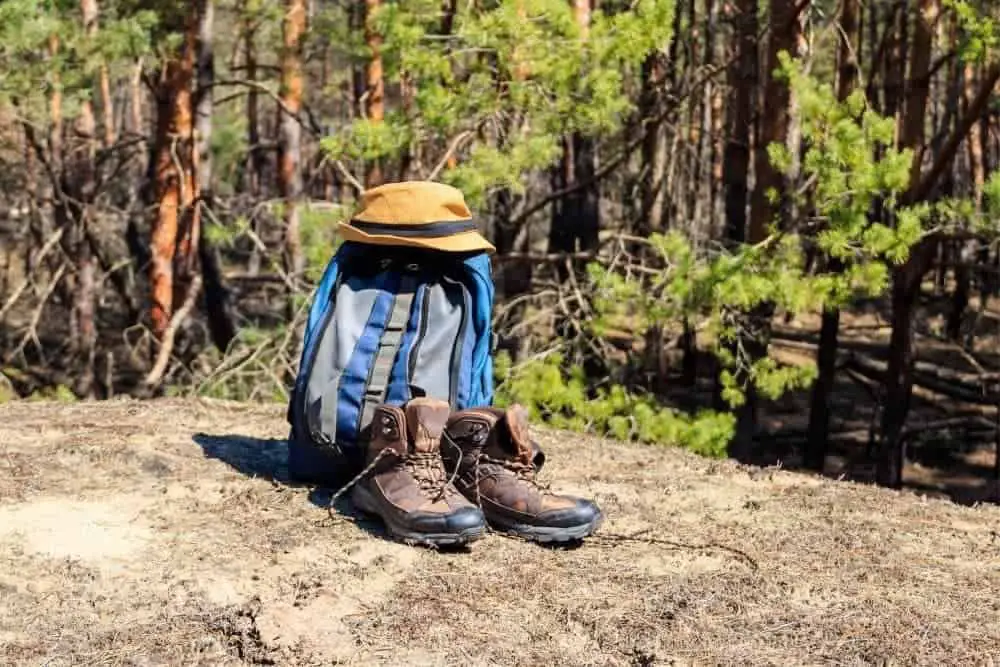
Another way to reduce the chances of hurting toes is to pack light for your hiking trips because heavy backpacking can cause pain. That way, you put less pressure on your ankle, feet, and toes.
Pros
- You move at a faster pace because there isn’t any weight to slow you down.
- You don’t have to worry about back pain or toe pains.
Con
- In the process of packing light, you may forget to pack some essentials that you may need on the trail.
8. Foot care on the go
You can also prevent your toes from hurting by ensuring adequate foot care as you hike. You should take some time to let your feet breathe some air.
For example, you can take off your boots and socks and sit for a while so your toes can relax. Also, you can immerse your feet in the water if you see a lake or river on the hiking trail.
You could also pour water from your bottle on your feet. Water cools the feet and can prevent your toes from swelling. Lastly, you can apply some Moleskin on your toes to prevent friction.
- Thin design conforms to the foot and fits in all shoes
- Designed to stay on all day
- Cuttable Moleskin can be shaped to any size
Last update on 2023-11-10 / Affiliate links / Images from Amazon Product Advertising API
Pros
- Your feet and toes get a break from work.
- It cools your feet and prevents toe pains, numbness, or soreness.
Con
- It could be time-wasting, especially if you’re on the clock to get to your destination.
Conclusion
Toe pains have been a topic of worry for hikers, and many factors contribute to it, especially your hiking boots. Hiking boots can make your toes hurt when on a hike due to many factors.
This article discussed the possible ways your hiking boots could’ve been causing the pains you feel when on the trail. At the same time, we discussed the reasons you need to prevent your toes from hurting.
More so, we highlighted some ways you can prevent your toes from hurting in hiking boots. If you want to ensure that your next hiking trip is toe pain-free, you can follow any or a few of the solutions we suggested.
Start hiking toe pain-free from now. Good luck!

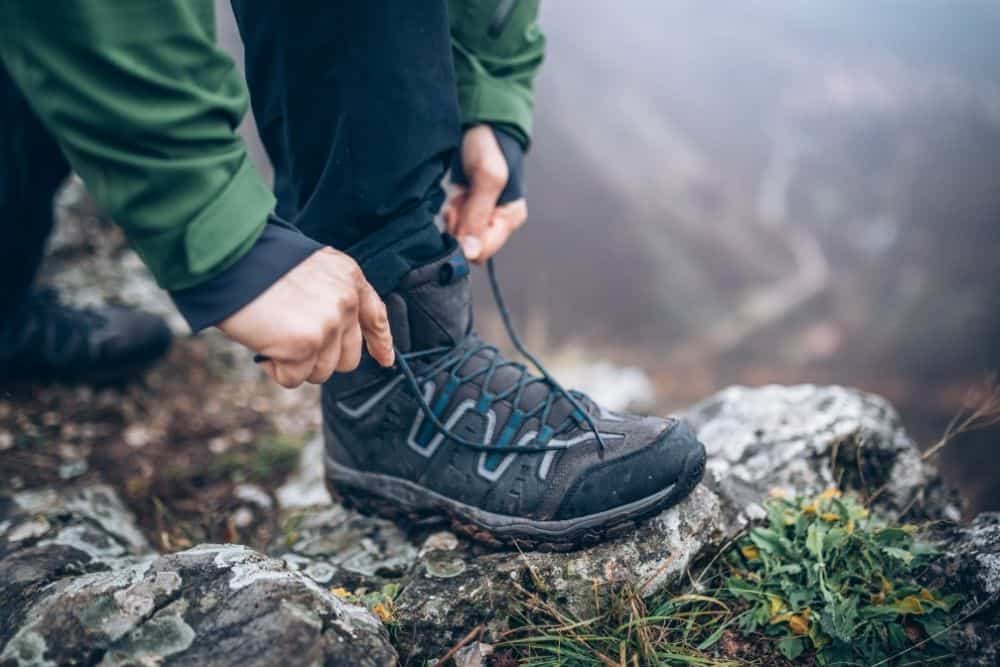






I was hiking the other day my boots a I felt fitted fine I had to rubbing or friction I just felt pressure more on my toe next to my big toe I thought it was going to burst open at 1 point I had to stop & point my toes up for the pressure I felt fade , how would I be feeling that ?
Hey there,
I think you have a problem with the toe room. It’s too short!
It might not be a problem when you’re standing still or walking lightly, but when you’re walking briskly or going down the hill, your longest toe will hit the tip of your boot.
You will need extra toe room, a certain amount of space between the toe and the tip of the boot – (1 inch to 2 inches)
You can refer to our 2 articles on this issue!
https://fromyourtrails.com/how-much-toe-room-should-you-have-in-hiking-boots/
https://fromyourtrails.com/how-much-room-do-you-want-in-hiking-boots/
If the problem isn’t there, let me know.